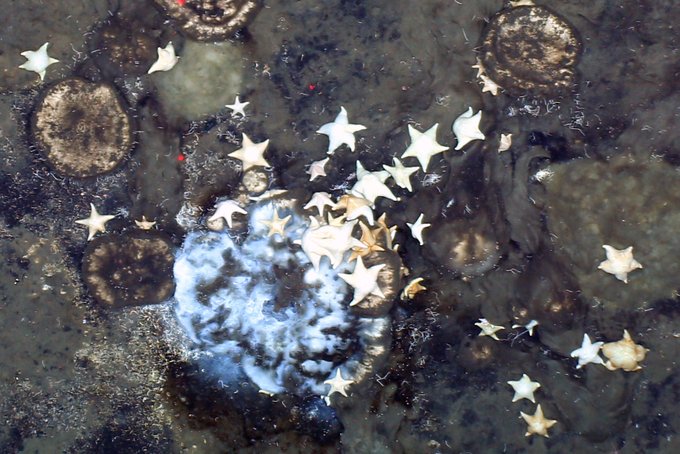
Researches studying a group of sponges in the Arctic have found they are surviving by eating fossils.
While the thought of consuming anything past its sell-by date can be enough to turn some people's stomachs, the vast community of ocean sponges is feasting on an old ecosystem that used to be based in nutrient-rich conditions created when the volcanoes in the area were last active.
The sponges were first discovered in 2016 living between 700 and 1,000 metres down in the central Arctic Ocean, where there is little access to food.
ScienceNews explains sponges are predominantly filter feeders, so researchers including marine biologist Teresa Morgant set about trying to learn more about how this particular community was surviving as there is little to no current there to provide food.
Advert
The researchers honed in on a mat of fossils under the sponge colony and analysed samples of the sponges, the mat material, and the surrounding water to determine if the sponges could be feeding off it. They also looked at the genetic makeup of the microbes that live within the sponge tissues and those in the sediment, and found that carbon and nitrogen isotopes in the sponge tissues closely matched those of fossils below.
The genetic studies found that the microbes had enzymes that could break down the material, suggesting they were dissolving the fossils into food which could be consumed by the sponges.
Antje Boetius, the chief scientist of the expedition, recalled 'jumping for joy' when the team first found the mat under the sponges.
She told VICE: 'It was a ship full of deep sea biologists who have studied the Arctic for decades, but we couldn't have dreamed of finding such a hotspot ecosystem. We’ve planned for a long time to have a mission dedicated to the discovery of what lives on the Arctic seamounts. They are a mystery.
Advert
'The first maps of the seamounts were made decades ago, but no one was ever able to go there with a camera or high-resolution methods. I always dreamed of such an expedition where we could just explore and find out what lives on the Arctic seamounts.'
These particular sponges are more than 300 years old on average, while the dead ecosystem below is around 2,000 to 3,000 years older. Researchers estimated the layer of fossils could provide almost five times the amount of carbon necessary for the sponges to survive.
Boetius hopes the evidence found in the research will encourage the need to protect the habitat.
If you have a story you want to tell, send it to UNILAD via [email protected]
Topics: Science, World News, Animals
